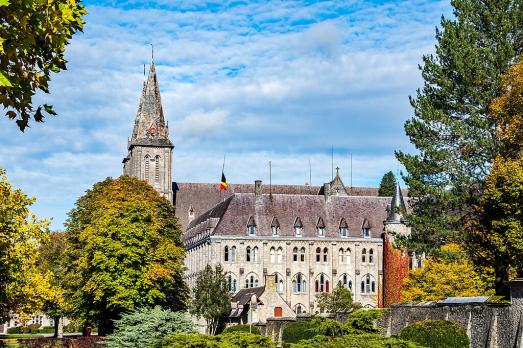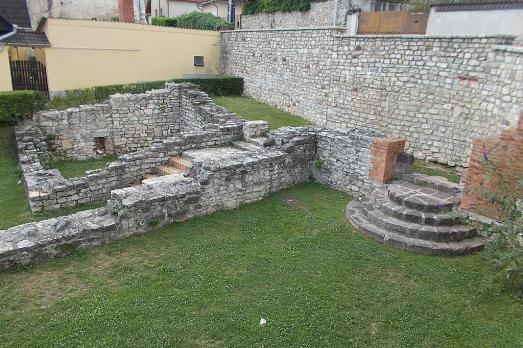Marcuskerk
Leusden, NL
Services in community center from 1908 to 1963. Out of use and demolished. Replaced by the Marcuskerk.
Here you can search for a building to visit. You can use the map find destinations, or you can use the filters to search for a building based upon what different criteria.
Leusden, NL
Services in community center from 1908 to 1963. Out of use and demolished. Replaced by the Marcuskerk.

Tortosa, ES
The Church of Mare de Déu del Roser is the only survivor of the Convent of Sant Francesc de Tortosa, founded in the 13th century. It was originally located on the opposite bank of the river Ebro. Between 1910 and 1914 it was rebuilt on the other side of the river and remodelled after the Spanish Civil War. It is currently the parish church of Roser and conserves the façade of the old Baroque building.

Anhée, LU
This impressive Neo-Gothic abbey was founded in 1872 by Benedictine monks. The church achieves its most sublime spiritual dimensions during the four high points of the day when the monks come together to pray in the church or crypt: matins, mass, vespers and the evening service. Everyone is welcome to join. The abbey is still home to a community of monks. Visitors can take a guided tour of the Abbey by booking in advance.
Leiden, NL
Marekerk, eight-sided central church building, designed by Arent van 's-Gravesande, 1639-'49. Portal by Jacob van Campen, 1659. Restoration in 1929 and 1940/50. Originally an organ with Hoofdwerk and Borstwerk, made in 1560 by Peter de Swart as a choir organ for the Pieterskerk in Leiden. Enlarged in 1629 and moved to the Marekerk in 1733 and converted by R. Garrels. Repaired in 1781 by HHHess. In 1966 the organ was reconstructed by Flentrop (Zaandam). In 2009 Verschueren Orgelbouw (Heythuysen) carried out a restoration, optimising the condition of 1966. The old pipework still in use is mainly by HHHess. Bell frame with chime consisting of a bell by C. Wegewaert, 1647, diam. 202.7 cm and a bell by Francois Hemony, 1663, diam. 98.6 cm. Mechanical tower clock, B. Eijsbouts, 1941, later fitted with electric winding.
De Meern, NL
Built as Dutch Reformed Church. Characteristic Protestant church building with tower, on the site of an older church. When the Samen op Weg congregation was formed in 2001, the Reformed Church from 1913 became the SoW church, and has been called Marekerk ever since. (47-02/48-02/49-02)

Veszprém, HU
The ruins of St Catherine belong to an old Dominican monastery founded by the Bishop of Veszprém in 1240.
Odoorn, NL
This church is listed as a National Monument of the Netherlands.

Easterlittens, NL
Large village church, built on a high mound and originally built in the 12th century from tuff. Consisting of a heavily patched tuff nave from the 12th century, against which a semi-circular closed choir of large yellow brick from the 13th century connects. In the 15th century the windows were renewed in Gothic style and a sacristy was added on the north side. In 1854 the dilapidated tower was demolished and, partly using the old stone, rebuilt. Restoration of the tower took place in 1902. The choir is said to still contain (remnants of) painted over frescoes.
Norg, NL
Historic village church with tower. Formerly dedicated to Margaret of Antioch. This church is listed as a National Monument of the Netherlands.

Albstadt, DE
The Margrethausen Monastery is a former Franciscan monastery founded in 1338 by the local lord Conrad von Tierberg. During the Thirty Years' War, the village and the monastery church were largely destroyed. The monastery church was rebuilt as early as 1707 and the consecration of the new monastery building took place in 1723, so that monastic life could continue. The monastery was dissolved in 1811 and the monastery buildings were then used as a school, teachers' residence and for local administration. Of the four former wings of the monastery, only the east wing, which directly adjoins the parish church, remains today.

new
The Chassidic Route is a cultural and historical trail tracing the rich legacy of Jewish communities in southeastern Poland and western Ukraine. This region was central to the rise of Chassidism in the 18th century. Here, we highlight 10 remarkable synagogues you’ll discover along this route.

he cradle of the Industrial Revolution in Germany, Chemnitz, is well-known for its industrial heritage landscape, but the city is also home to remarkable examples of religious architecture from different historical periods. Join us as we explore the key landmarks of this European Capital of Culture 2025.

The twin towns of Nova Gorica (Slovenia) and Gorizia (Italy), lying on the border between the two countries, have a rich religious heritage, steeped in centuries of tradition. If you are looking for ideas for your visit, take note of these 10 religious sites that you should not miss.